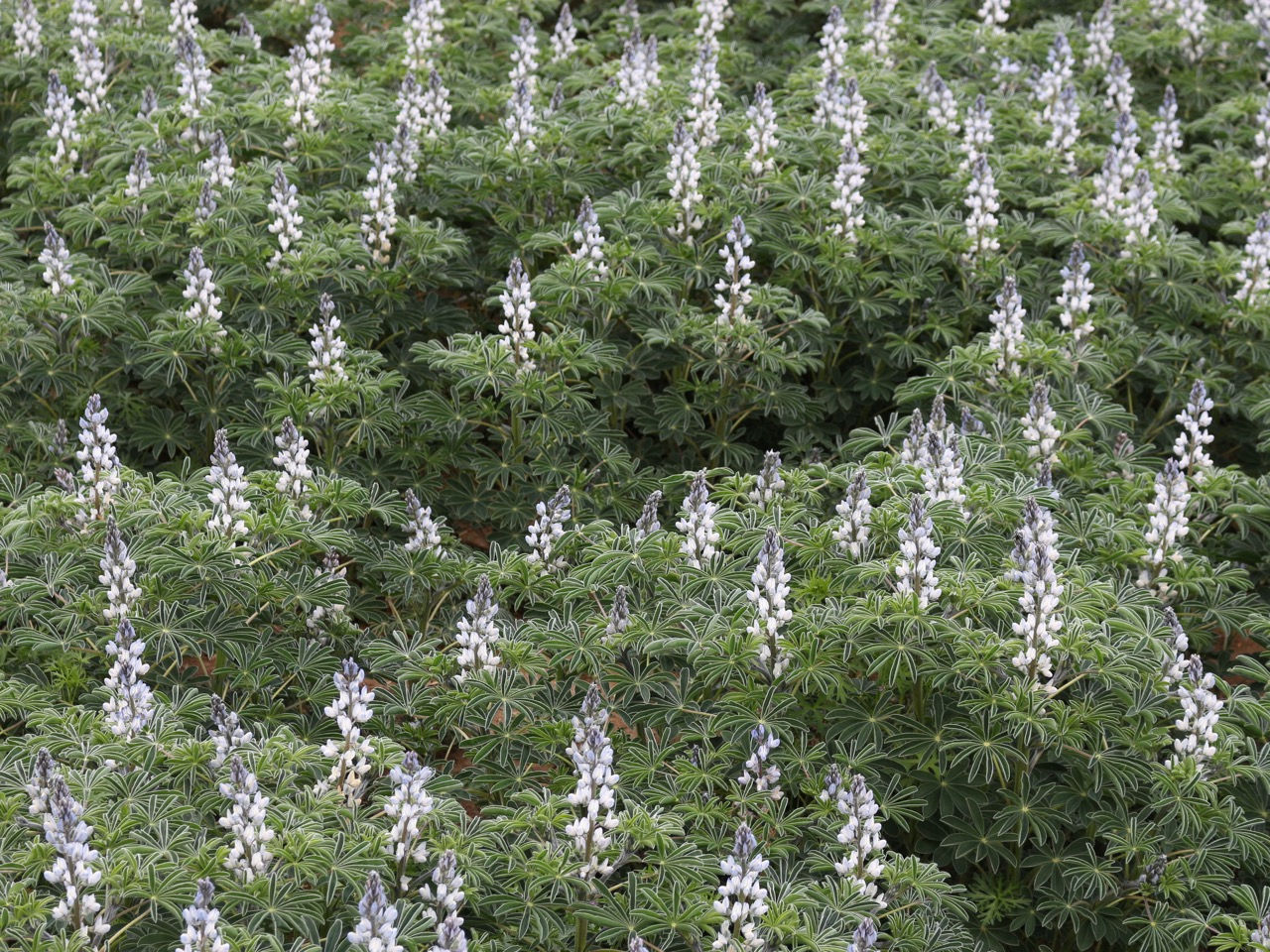In pursuit of the white lupine
Like Alice chasing the white rabbit in Wonderland, for five years biologist Benjamin Péret's team has been chasing the white lupine.
A plant capable of capturing nutrients even in very poor soil, which could help prevent a future phosphate crisis. The sequencing of its genome, carried out for the first time at the BPMP laboratory in Montpellier, has identified the gene responsible for this astonishing ability.

If Alice's white rabbit was "always late, always lateWhite lupin seems to be one step ahead of other plants in our gardens. Recognizable by its large clusters of white or multicolored flowers in its ornamental form, this legume was previously known mainly for its crunchy seeds, served as an appetizer. Today, it is its roots that are of interest to the scientific community, particularly Benjamin Péret, a researcher at the laboratory of Biochemistry and Molecular Physiology of Pplants (BPMP). “Some Lupins have the extraordinary ability to develop what are known as proteoid roots. This is a characteristic found in very few plants. explains the biologist. Short, dense roots capable of capturing nutrients more efficiently, particularly phosphate, even in very poor soil.
Extraordinary roots
Phosphate is an essential nutrient for plant growth, but it is difficult to absorb. "Even though phosphorus is present in large quantities in the soil, it is not always in a form that can be assimilated by plants. For example, it is estimated that 80% of the phosphate contained in fertilizer cannot be recovered. Lupins are much more efficient." How? Thanks to a specific root system capable of secreting enzymes designed to break down phosphate from organic molecules, making it available to plants. "In phosphate-rich soil, lupins will produce very few proteoid roots, but in poor soil, they will develop many,"adds the biologist.
This is a direct response by the organism to its environment, typical of plants , as Laurence Marquès , also a member of the Root System Development and Plasticity team , points out : "Animals and humans are not able to adapt their organs or limbs to the environment, whereas plants have this plasticity that allows direct interaction." To take this further, biologists sought to identify the gene responsible for the development of these amazing roots. "We want to understand how the plant transforms the phosphate signal into a molecular signal and then into a developmental response," explains Benjamin Péret.
Initial genome sequencing
With the collaboration of eleven French and European research laboratories, including the Toulouse bioinformatics platform, Benjamin Péret's team was the first to sequence, assemble, and publish the 38,528 genes of the lupin genome. This was a success in itself, but the gene responsible for the formation of these proteoid roots still had to be identified.
This is where mutants come into play. "All plants naturally produce mutants. It is a driving force of evolution that allows new functions to appear over several thousand years thanks to new genes." Mother Nature's timing is not the same as that of science, so researchers used various methods to increase the natural mutation rate and were able to select four mutants out of the 25,000 tested. There are no magic beans or talking flowers in this story, just simple lupins with overdeveloped proteoid roots.
By comparing the genome of these mutants with that of an ordinary lupin, Benjamin Péret's team was able to identify the gene that, when mutated, triggered the development of these roots. "We found that when the function of this gene is lost because it has mutated, lupin plants produce even more proteoid roots. These mutants are fantastic tools for trying to understand the mechanism behind the formation of these extraordinary roots."
Preventing the phosphate crisis
Thanks to the location of this gene, whose identity remains a secret, biologists are considering a possible transfer to field crops, which would then develop the same roots as lupins, resulting in significant phosphate savings. This is a major issue, given that phosphate,which is extracted from mines mainly located in Morocco and China and is a cornerstone of global agriculture, could run out in the coming decades, posing the risk of an unprecedented food crisis, warns Benjamin Péret: "Phosphate is not like oil; there is no possible alternative."